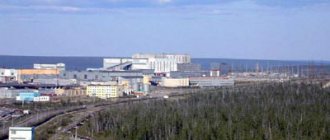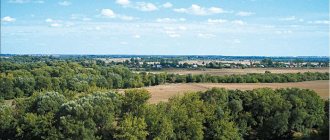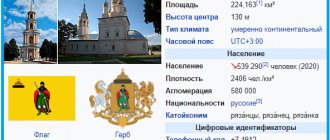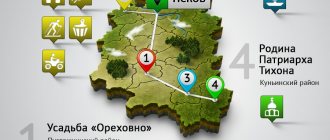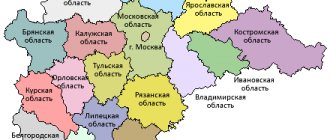The Republic of Sakha (Yakutia) is a subject of the Russian Federation within the Far Eastern Federal District.
The capital is the city of Yakutsk.
The territory of the republic stretches for 2,500 kilometers from north to south and 2,000 kilometers from west to east. The area of the Sakha Republic is 3083.5 thousand sq. km. This is the largest region of Russia, in addition, Yakutia is the largest administrative-territorial unit in the world: its area is five times larger than that of France. At the same time, the population according to 2014 data is less than a million people (955,056).
What holiday is it today?
February 10, 2022, Thursday
Today are holidays, events: Diplomat's Day Tomorrow: World Sick Day Discovery of insulin
Today is the Orthodox holiday: St. Ephraim the Syrian. Venerable Ephraim of Novotorzhsky. Venerable Ephraim of Pechersk, Bishop of Pereyaslavl. Venerable Theodosius of Totem, Spasosumorin of the monastery, leader and founder... Tomorrow: Transfer of the relics of the holy martyr Ignatius the God-Bearer. Saints Gerasim, Pitirim, Jonah, bishops of Great Perm, Ustva...
Today is a national holiday: Ephraim's Day... Tomorrow: Lawrence's Day
Seasons
Seasons, four periods of the year (spring, summer, autumn and winter) characterized by certain average temperatures. The period during which the Sun passes through one of these sectors is called the season. Spring in the Northern Hemisphere and autumn in the Southern Hemisphere begin when the Sun passes through the initial circle of declination and its right ascension is 0° (vernal equinox). Summer in the Northern Hemisphere and winter in the Southern Hemisphere occur when the sun's right ascension is 90° (summer solstice). Autumn in the Northern Hemisphere and spring in the Southern Hemisphere begin when the sun's right ascension is 180° (autumnal equinox). The beginning of winter in the Northern Hemisphere and summer in the Southern Hemisphere is considered to be the winter solstice, when the direct ascension of the Sun is 270°... Next: Seasons. Russian folk calendar. Monthly words...
Natural resources
The territory of Yakutia is located within four geographical zones: arctic desert, tundra, forest-tundra and taiga forests, which occupy almost 80% of the area.
Almost the entire continental territory of Yakutia is a zone of continuous permafrost. The average thickness of the frozen layer reaches 300-400 meters, and in the Vilyui River basin - 1500 meters: this is the maximum freezing of rocks on Earth. There are 485 glaciers in the mountains of Eastern Yakutia with a total area of 413 sq. km. and with a fresh water reserve of more than 2 thousand cubic km.
The republic's forest reserves are estimated at 10.3 billion cubic meters. In the taiga regions, Daurian larch predominates (85% of the forest area), pine, dwarf cedar, spruce, birch, and aspen are also ubiquitous; Siberian cedar is common in the southern regions; fragrant poplar and choicenia are common in the mountains.
Yakutia is part of the taiga-tundra zoogeographic zone with an unusually rich fauna. The island territory is inhabited by walrus, seal, seal, and polar bear. On the continental territory, moose, reindeer, musk deer, bighorn sheep, wapiti, brown bear, wolf, as well as animals with valuable fur - red fox, arctic fox, sable, ermine, weasel, American mink, etc. are common.
In the sea, river and lake reservoirs of the republic there are about 50 species of fish, the predominant of which are salmon and whitefish.
More than 250 species of birds nest on the territory of Yakutia. Among them are such rare ones as the pink gull, the white and black crane, the little curlew and the gyrfalcon, listed in the International Red Book.
Folk calendar about every day
Every day one season always replaces another and this determines a person’s way of life. In connection with this, a folk calendar was formed in which there were practically no nameless, unmarked days. Every day was special, had its own purpose. All this was determined by climate conditions and astrological phenomena.
A calendar is a system for counting periods of time. The first calendars arose a long time ago, in ancient times, because there was a need to measure time. The word calendar comes from the Latin words caleo - to proclaim and calendarium - debt book. This is due to the fact that in Ancient Rome the beginning of each month was especially proclaimed, and because it was customary to pay debts on the first day of the month. Different peoples counted time differently. Some calendars are based on the changing phases of the moon - lunar calendars; in others - the change of seasons - sunny; in others, the length of the year was coordinated with the change of seasons, and the counting of months was associated with the phases of the Moon. Such calendars are called lunisolar.
In Rus', the calendar was called a monthly calendar. Every day, the month book covered the entire year of peasant life, “describing” day by day, month after month, where each day had its own holidays or weekdays, customs and superstitions, traditions and rituals, natural signs and phenomena. The cyclical nature of the calendar is reminiscent of human life, where spring is youth, summer is heyday, autumn is the time of harvesting fruits (it’s good if there are some, otherwise you can live your life without collecting fruits), winter is the time of wisdom and peace. This cyclicality and rhythm determined the way of life of the farmer. The folk calendar was an agricultural calendar, which was reflected in the names of the months, folk signs, rituals and customs. Even the determination of the timing and duration of the seasons is associated with real climatic conditions. Hence the discrepancy between the names of the months in different areas... Next: Folk calendar...
Climate of Yakutia
The republic is located in a zone of sharply continental climate with very low temperatures in winter and high temperatures in summer.
The thermometer in January drops to -50...-65 degrees, and in the summer it rises to +35 degrees. Large temperature differences between winter and summer are due to the fact that the underlying surface is very cold in winter and warms up in summer.
Closer to the sea coast, the climate is somewhat milder, because in winter and autumn they heat the coast, and in the warm season they cool it.
During the year, every square centimeter of territory on the Arctic coast receives 70 kcal of solar radiation, and in the south of the Republic it is already 100 kcal.
Winds blowing within Yakutia have a speed of no more than 1-2 m per second. Wind speed increases to 4.5-6 m only on the coast.
The climatic features of the Republic are determined by the general circulation of air masses and the peculiarities of physical and geographical conditions, namely the distance from the Atlantic and Pacific oceans, as well as isolation by mountain systems.
From the Arctic Ocean, the territory is open to its influence.
The large area of the territory and the great elongation both from north to south and from west to east have formed the Arctic, subarctic and temperate zones within the Republic.
Geographical location, atmospheric circulation and the nature of the relief determine the precipitation regime. Winter, thanks to a powerful winter anticyclone, is dry and with little snow throughout Yakutia.
In summer, cyclonic activity develops, so small amounts of precipitation are possible.
Autumn is wetter than spring. In general, on the flat territory, from 200 to 250 mm falls per year, and only in the closed Verkhoyansk depression does their amount increase to 1000 mm.
The western slopes of the Verkhoyansk and Suntar-Khayat ridges receive more precipitation. Snow cover in most of the territory lasts for 220-250 days or 7-8 months a year. In mountainous areas with high altitudes and on the coast, snow lasts longer - up to 260-280 days.
Yakutia is located in a zone of continuous permafrost, with the exception of its southwestern part. The harsh climate contributed to the constant low temperatures of the frozen soil.
Research conducted by M.I. Sumgin, allowed us to formulate the main problems of permafrost science - at a temperature of -20 degrees, a snow cover 16 cm thick protects the soil from the cold, but a layer of snow 8 cm no longer protects.
Snow has a warming and cooling effect. The largest thickness of the frozen zone is located in the Anabar crystalline massif and exceeds 1000 m.
In mountainous areas there is a large difference in permafrost thickness.
Fishing calendar for every day
The fishing calendar should not be taken as an absolutely indisputable truth. Fish biting is greatly influenced by a whole range of natural factors, as well as the influence on the nature of man himself. You must not forget that the fish’s bite depends and is determined not only by the calendar dates and biological cycles of their life, reflected in the calendar, but also, no less, by the state of their habitat; the bite also depends on weather conditions: air and water temperatures, cloudiness, wind direction and strength, etc... Next: Fishing calendar...
Lena river
The Lena River, by the way, is the fourth longest in the world, and its width in some places is so great that it is not possible to see the opposite bank. Its peculiarities include the fact that it freezes not like all rivers - from the upper reaches to the lower reaches, but vice versa.
It is believed that Lena got its name from the Evenki-Evenki language, in which it was called “Yelyu-Ene”, which translates as “Big River”.
Culture and folklore
The veneration of sacred objects is characteristic of Yakut culture. The most representative objects are hitching posts (serge). They were used to perform various rituals. A hitching post is a post with a certain profile, which has depressions and thickenings. Some serge have branches at the top, which makes them look like trees.
Sacred plants are also revered in Yakutia, in which, according to religion, the spirit of the earth Aan Dar-khan Khotun lives. Rituals dedicated to the deity are held near these trees in the spring. The tree is decorated with ribbons, it is sprinkled with kumiss - the spirit must certainly respond to requests for wealth and prosperity.
Yakut folklore also mentions other natural objects that have magical properties. These are passes (aartyk) and river cliffs. During their crossing, the Yakuts perform sacrifices to the host spirits, which must certainly make a person happy. Sacred objects in Yakutia are places of shamanic initiation. The teacher and shaman candidate must climb the Jokuo mountain range.
During the ascent, the teacher instructs the candidate and shows the roads leading to the sources of human diseases. And not every applicant becomes a shaman after this. The originality of the Yakut people can be seen in numerous historical and cultural monuments. It is natural that most of them are related to the geographical features of the republic.
You should start getting acquainted with the local flora and fauna by visiting the Ust-Lena Nature Reserve, which is rightfully considered one of the most beautiful and largest in the Russian Federation - its area is 32,000 km2. A harsh polar climate prevails there - in winter the temperature can drop to -53°C, although during the warm season, which, however, lasts only 2 months, the air becomes summer-warm - up to 30°C.
Meanwhile, the polar night, which lasts about 80 days, allows you to enjoy one of the most unique natural phenomena - the northern lights.
Orthodox calendar about every day
Orthodox calendar: Orthodox, Church and Christian holidays.
The church year is an alternation of weekdays and holidays. On weekdays, a person is called to work “by the sweat of his brow to earn his bread.” Holidays are given in order to feel liberation, to rise above the bustle and routine of the world, to feel involved in the highest of worlds, “where there are no illnesses, sorrows and sighs, but endless life.” Since ancient times, holiday cycles have been associated with the seasons. The pagans associated them with the worship of the forces of nature, the cult of which in the Old Testament was replaced by gratitude to the Creator for the universe. And although the connection between holidays and the seasons has not completely lost its power, since God is present in everything, in the plant and animal world, in human works, it nevertheless faded into the background, giving way to a spiritual foundation built on the Sacred Scriptures. The history of Orthodox holidays dates back to the times of the Old Testament. Each of the Orthodox holidays is dedicated to the remembrance of the most important events in the life of Jesus Christ and the Mother of God, as well as the memory of saints... Next: Orthodox calendar...
A little about the project.
Search for the seven wonders of Russia. The competition was organized by the Izvestia newspaper, the Rossiya TV channel and the Mayak radio station. Voting took place online and via SMS. The results of the popular vote were announced on June 12, 2008.
The republic's representatives reached the semi-finals of the competition: the largest diamond quarry (open-type diamond mine) is located in Yakutia in the city of Mirny. It is also called simply and unpretentiously - “Mir”; its depth is 525 m, diameter 1200 m. No helicopters fly over the quarry where Yakut diamonds are mined: a funnel five hundred meters deep and more than a kilometer wide sucks in aircraft from space. It was here, on June 13, 1955, that industrial diamond mining began for the first time in our country.
An amazing natural phenomenon - the pole of cold - is located in the Tomtor area of the Oymyakonsky district (ulus) in Yakutia. There are no other places in the world where people constantly live and work at such low temperatures. The average monthly temperature in January is minus 61 degrees Celsius, and on the coldest days it can reach minus 68. The village of Tomtor is located at an altitude of 2000 meters above sea level and in the depression of the beautiful Verkhoyansk Mountains. It was here in 1924 that academician Sergei Obruchev recorded the lowest temperature for our hemisphere - 71.2 degrees Celsius.
Regional wonders that participated in the competition from the region: The Lena River is one of the largest rivers on the globe, flowing through the territory of the Russian Federation. Length 4270 kilometers. It originates on the western slopes of the Baikal ridge and flows into the Laptev Sea. Death Valley is a strange area in the area of the Vilyui River, where, according to legend, strange metal objects are hidden in the ground, posing a danger to all living things. The world-famous Berelekh mammoth cemetery is located in lacustrine-oxbow sediments. This mammoth cemetery was explored in 1970 by N.K. Vereshchagin, B.S. Rusanov and the co-author of this book P.A. Lazarev. They collected 7.5 thousand different bones here. Of these, 98.6% are bones of young and mature mammoths. The famous Lena Pillars are majestic rocks that stretch like a solid wall along the right bank of the beautiful Lena. Up close, each pillar resembles a magical statue, a brilliant sculpture. Lake Labynkyr is one of the least explored by tourists and the most beautiful corners of the Oymyakon region of Yakutia, the Mammoth Museum of the Academy of Sciences of the Republic of Sakha (Yakutia) is a scientific and cultural center for the study of mammoth fauna and its habitat in the Ice Age, Ulakhan Taryn is a perennial large dam mainly from groundwater , the Institute of Permafrost Studies is developing a theory, developing theoretical and methodological foundations for rational environmental management and environmental protection in the permafrost zone, the Ust-Lena State Nature Reserve and other wonders...
Russian folk calendar for every day
The word “sign” comes from the word “notice”, i.e. observe. As a result of observing what happens around a person every day, he accumulates life experience. This knowledge was passed down from generation to generation, carefully preserved and people trusted it as a sacred book. Many signs have come to us from the depths of centuries without losing their knowledge. Each of us is free to choose: to dismiss all this as an absurd superstition or to take a closer look at the signs and take the centuries-old experience of generations more seriously. Most of us, when taking exams, ask them to scold them, boasting about some kind of good fortune or luck, spit so as not to jinx them or knock on wood, take a detour if a black cat crossed the road, are afraid of the number 13 and much more. And who among us does not have lucky things, numbers? Who has never resorted to the help of fate at least once in their life, who has not believed in secrets? It’s as if everything connected with signs is hidden somewhere deep in our subconscious. Often we remember them mechanically, unconsciously, or just as a joke. But, undoubtedly, the signs contain a lot of accurate knowledge and practical wisdom of our ancestors. They cover all the characteristic, often difficult to perceive, natural phenomena. Signs have preserved a lot of what was in old folk holidays and customs; they help predict the weather, grow crops... Next: Folk signs...
Cities of Yakutia
Yakutsk (286 thousand people) is the capital of the Sakha Republic. Founded by the Cossacks in 1632 as the Lensky (Yakut) fort. Since then, it has become the center of the Yakut Cossacks and the main Russian base in northeastern Siberia.
Today Yakutsk is the third largest city in the Far Eastern Federal District. People from all the villages of the vast Yakutia come here in search of civilization, and local residents, primarily Russian speakers, strive to leave this city and move to the capital or somewhere near it. Despite good infrastructure, the presence of working enterprises, primarily the fuel and energy complex, and a lot of money, Yakutsk remained a lost city in the Siberian wilderness.
One of the office buildings in Yakutsk
Neryungri (60 thousand people) is the second largest city in Yakutia. Located in the very south of the republic. It was founded relatively recently - in 1975. But back in the 17th century, the first gold mines were discovered here. Now very valuable and rare coking coal is mined here, mainly for export.
Mirny (35 thousand people) is the diamond capital of Russia. Founded in 1955 next to the Mir kimberlite pipe discovered here. Diamonds are mined here by open-pit mining, and the diamond quarry, which goes 1,200 meters deep, is one of the largest in the world. This is where the diamond industry is located, which has invested a lot in the infrastructure of this city.
Holiday calendar, dates and events of the year
All state and professional holidays in Russia, including significant World and International holidays, and other equally interesting holidays and events about every day.
The holiday has always kept pace with the history of mankind. Social time can be divided into three types: everyday life (weekdays), weekends and holidays. Everyday life is a series of practices repeated day after day and every day (work). Weekends are regular breaks from the rush of everyday life. It is believed that on weekends a person should restore his strength after working days. Day off, non-working day. A holiday is a day of celebration established in honor or in memory of someone or something. A day or series of days celebrated by the church in memory of a religious event or saint... Next: Calendar...
Prayer book, Orthodox prayers for every day
Prayer is the most powerful means for healing all illnesses - both physical and mental. Prayers can be laudatory or grateful, petitionary and repentant. If we have offended God, sinned, we must ask Him for forgiveness, that is, repent. Such prayers are called repentant prayers. If everything is fine with us, if we and our loved ones are healthy and prosperous, if we have a place to live, something to wear, something to eat, we must glorify and thank God for this. Such prayers are called praise or thanksgiving. If some misfortune, illness, trouble or need happens, you need to ask God for help. Such prayers are called petitionary... Next: Orthodox prayers...
Zodiac, astrological, eastern calendar. Zodiac signs
In ancient times, to establish the calendar, priests used knowledge of the positions of all the planets. Before the reform of Peter 1, the New Year was celebrated on the Day of the Autumn Equinox. On this day, according to ancient legend, the most peaceful treaty was concluded between the Great Race (ancient Slavs) and the Great Dragon (ancient Chinese) and it was approximately 7518 years ago... For the ancient Slavs, the calendar month corresponded to the lunar cycle from new moon to new moon, taking into account such Thus, the relationship of the entire annual cycle with astronomical and natural phenomena. There was no coherent calendar system. The main natural phenomena are still considered to this day to be the days of the solar equinox and solstice - the Slavic holidays Maslenitsa, Kupala, Ovsen and Kolyada. But during the time of Peter 1, all ancient Slavic calendars were abolished and a new Western European calendar from the Nativity of Christ (Julian calendar) was introduced, while the beginning of the calendar was moved to January 1. The Julian calendar (old style) did not take leap days into account and accumulated one extra day every 128 years. After the October Revolution in 1918, the Gregorian calendar (new style) was introduced in Russia, according to which an amendment of 13 days was introduced. The calendar of the ancient Slavs was based on two planets: the Sun and the Moon. And now they don’t use anything at all. The calendar has become static. There is no such thing as the calendar, it turns out, resting on some planet. Nobody even knows about it. There are just some standard numbers, there are months and holidays. The calendar is based on the Sun and Moon. Why is this so? Because these two luminaries influence the Earth. The Earth revolves around the Sun, and the Moon revolves around the Earth. And these two luminaries create the atmosphere on the planet. From here the calendar is built... Next: Astrological calendar...
General information about the Republic of Yakutia
Distinctive features .
The Republic of Sakha, or Yakutia, is the largest region in Russia. With an area of 3 million square meters. km, Yakutia today is the largest administrative-territorial entity in the world. The territory of Yakutia can accommodate five Frances or one Kazakhstan. But this is not the only feature of this unique region. Another peculiarity of Yakutia is that these vast territories are inhabited by barely anything - a little more than 950 thousand people. And although Yakutia is not a leader among regions with the lowest population density, the contrast between the size of the territory and the number of inhabitants is still amazing.
To move around Yakutia you need special transport...
The main wealth of Yakutia is its mineral resources. And the most valuable of them are diamonds and uranium. The Elkon uranium deposit is the largest in the country. It has reserves of 600 thousand tons of uranium. A is one of the most important players in the global diamond market. But if you dream of a diamond paradise, do not rush to pack your bags and go to Yakutia. Weigh the pros and cons. And think about it - why, given such a huge territory, is there such a small population in Yakutia?
So what prevents the settlement of the vast Yakut expanses? First of all, the climate. The entire territory of Yakutia belongs to the regions of the Far North. In many areas, the average temperature in January or December breaks the mark of minus forty below zero. It is in Yakutia that Oymyakon is located - the pole of cold of the Northern Hemisphere, where a temperature of −71°C was recorded. Short summers and long winters, when the temperature is below zero for 7-9 months a year, are truly hellish conditions that can scare away even the most desperate romantics.
Geographical location . The Republic of Sakha is part of the Far Eastern Federal District. But to tell the truth, geographically it belongs not so much to the Far East as to northeastern Siberia.
In the north it has an extensive coastline, washed by two seas of the Arctic Ocean - the Laptev Sea and the East Siberian Sea. In the east it borders with the Chukotka Autonomous Okrug and the Magadan Region, in the southeast - with the Khabarovsk Territory, in the south - with the Amur and Transbaikal Territories, in the southwest - with the Irkutsk Region, in the west - with the Krasnoyarsk Territory.
Most of it is occupied by dense taiga forests, and only in the northern, Arctic region is some diversity observed. But it is unlikely to please a lover of diverse flora and fauna. Arctic deserts, tundra and forest-tundra are the main natural zones of northern Yakutia, where reindeer, polar bears, seals and walruses reign.
One of the greatest rivers of Siberia, the Lena, flows through Yakutia. Its length is 4400 km. Its numerous tributaries form the vast basin of the Lena River, an area comparable to the size of Yakutia itself. Other significant rivers are the Aldan and Kolyma. Yakutia can be called a country not only of rivers, but also of lakes: there are more than 600 thousand lakes here, 10 of them have an area of more than 100 square meters. km.
Lena River - the majestic river of Siberia
Population. The indigenous population of the Sakha Republic are the Yakuts, who call themselves Sakha. This people is known for having bred a special breed of cows (Yakut cow) and dogs (Yakut Laika). Today, these born hunters and herders make up half of the population of Yakutia (48.67%). Russians are in second place (36.9%). In third place is another indigenous people - the Evenks (2.19%).
Yakut girl in national costume
The birth rate in Yakutia is almost twice as high as the mortality rate (17.6 people per 1000 population versus 9.3 people). Nevertheless, the population of the republic remains stable at around one million, plus or minus 50 thousand people. As of 2013, 955,580 people lived here. Of course, many of those who came here during the USSR are striving to leave the Sakha Republic and move to a place where the climate is better and there are more benefits of civilization.
Crime . In the Republic of Sakha, crime is all right. That is, it exists, its level is not so high as to sound the alarm. 36th place in the crime ranking of regions suggests that the crime level in Yakutia does not differ from the Russian average. Many crimes are committed while drunk. They drink a lot in Yakutia - some out of idleness, some out of despair.
The unemployment rate in Yakutia is quite high - almost 8%. It should be noted here that the republic’s economy is focused on mineral extraction. This is where the highest salaries are - 66 - 79 thousand. Those who are engaged in financial activities or science receive slightly less (about 60 thousand).
But the rest have a pretty hard time. For example, the average salary of fishermen is 12 thousand rubles, and those employed in agriculture are 13 thousand rubles. Who knows, maybe they are given wages in kind? One way or another, the average salary in Yakutia is 39.6 thousand rubles, which, although not small, is not such a big compensation for the harsh living conditions for the regions of the Far North, where permafrost reigns.
Kimberlite pipe "Mir" in Mirny
Property value. The average cost of a one-room apartment in Yakutsk is 3 million rubles. The price for two-room apartments starts from 3.5 million rubles and can reach 6 - 6.5 million rubles.
Climate. When talking about the climate of Yakutia, first of all, they highlight a significant temperature range - from +40°C in summer to −60°C in winter. Indeed, a feature of the Yakut climate is that it is sharply continental. Average daily temperatures here rise very quickly in spring and fall just as quickly in autumn. The most favorable climatic conditions are in the middle basin of the Lena River, where the duration of the frost-free period is as much as 95(!) days. Snow cover lasts 200-250 days a year. Winters in Yakutia are usually dry and with little snow. Peak precipitation occurs in February - March.
Dream books online, interpretation of dreams
A dream book is nothing more than an interpreter of dreams and dreams, a translator of dreams. Since ancient times, people have been using dream books; dreams have always been given great importance, and people have often noticed the prophetic properties of some dreams. The dream book can become your faithful assistant every day and throughout your life, thanks to the dream interpreter you can always make the right decisions, the dream book will help you resist temptations in time, and will warn you against wrong steps and frivolous actions. Further…
Districts of Yakutia
- Abyisky ulus (district) - White Mountain
- Aldan district - Aldan
- Allaikhovsky ulus (district) - Chokurdakh
- Amginsky ulus (district) - Amga
- Anabar national (Dolgan-Evenki) ulus (district) - Saskylakh
- Bulunsky ulus (district) - Tiksi
- Verkhnevilyuysky ulus (district) - Verkhnevilyuysk
- Verkhnekolymsky district - Zyryanka
- Verkhoyansk district - Batagai
- Vilyuysky ulus (district) - Vilyuysk
- Mountain ulus - Berdigestyakh
- Zhigansky ulus - Zhigansk
- Kobyaisky ulus (district) - Sangar
- Lensky district - Lensk
- Megino-Kangalassky ulus - Nizhny Bestyakh
- Mirny district - Mirny
- Momsky district - Khonuu
- Namsky ulus - Namtsy
- Neryungri district - Neryungri
- Nizhnekolymsky district - Chersky
- Nyurbinsky district - Nyurba
- Oymyakonsky ulus (district) - Ust-Nera
- Olenyok Evenki national district - Olenyok
- Olekminsky district - Olekminsk
- Srednekolymsky ulus (district) - Srednekolymsk
- Suntarsky ulus (district) - Suntar
- Tattinsky ulus - Ytyk-Kyuyol
- Tomponsky district - Khandyga
- Ust-Aldansky ulus (district) - Borogontsy
- Ust-Maysky ulus (district) - Ust-Maya
- Ust-Yansky ulus (district) - Deputatsky
- Khangalassky ulus - Pokrovsk
- Churapchinsky ulus (district) - Churapcha
- Eveno-Bytantaysky national ulus (district) - Batagai-Alyta
Conclusion and a little mysticism
Yakutia is also full of mysteries, the answers to which are still unknown. One of these amazing phenomena is the Valley of Death, also known as the Vilyui Cauldrons. The brave souls who dared to spend the night in the valley noted that the temperature inside the cauldron was so high that no severe frost was scary in it. But here’s what’s interesting: after visiting the valley, these brave men were destined for a terrible fate: suffering from serious illnesses, they quickly died.
There are many versions regarding the Vilyui cauldrons: their appearance is associated with both an alien base and the entrance to hellish dungeons. Although there is a banal explanation, devoid of otherworldly implications.
Death Valley is nothing more than a place where spaceship debris fell. Yakutia literally breathes history, while existing harmoniously in the present. And her future, apparently, is no less impressive.

